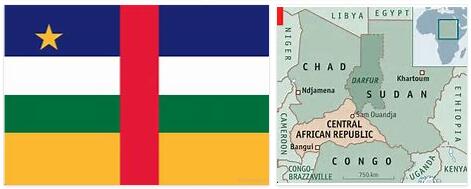Zanzibar, Tanzania
Zanzibar is an archipelago with the main island of the same name, located northeast of Dar es Salaam. The main advantages of this resort are man-made and miraculous sights: a rich and diverse cultural heritage, carefully preserved coastline, clean coastal waters and many species of marine animals. The best beaches are located in the southeast of the island, while entertainment and nightlife are in the north.
Note: according to allcitypopulation, the population of Tanzania is 61.5 million (2021).
Once the island was the abode of romantic tourists with tents and backpacks. Now mid to high end hotels are lined up here, and young travelers are found mostly in the northern part of Zanzibar.
The capital of the island – Stone Town – is famous for its ancient fort, its own amphitheater, several mosques, the Slave Trade Square and the house where the legendary Freddie Mercury was born and grew up. Zanzibar is also striking in the richness of the natural world: dolphins swim on its fabulous beaches, and the Monkey Park and the Giant Turtle Island await the curious.
Diving on Zanzibar
The main dive center is located in Stone Town. Of the many dive sites on the island, the following should be highlighted:
Pange Reef in the west of Zanzibar – a maximum depth of 14 m, a wide variety of corals and tropical fish. Ideal for learning to dive in “open water”: the sea is calm and shallow. Night diving will allow you to see crabs, squids, stingrays and other inhabitants of the ocean, who prefer to walk in the dark.
A British ship that sank in 1902 and is now a unique artificial reef and home to moray eels, lionfish and other seagrass fish. Many parts of the ship can still be seen, others are only vaguely visible under the coral layers.
Boribi Reef is one of the best places to dive. Here are the most beautiful underwater mountains and various corals that have formed over the centuries the likeness of huge columns. Here you can see large lobsters and white sharks swimming past. The maximum depth is 30 m.
Shopping
The most shopping in Zanzibar, of course, is in the capital. The largest number of stores are located along Hurumzi Street and Kenyatta Road – here are the main souvenir shopping center Memories Of Zanzibar (off. site in English) and the popular organic cotton clothing store with African motifs One Way (One Way, Kenyatta Rd).
In the villages in the south, west and east of the island, not only shops – decent markets are rare, and prices are 2-3 times higher than in the capital.
Magnets are rare in Zanzibar. And why are they needed when every shop has a sea of amazing masks, dishes, ebony figurines, jewelry made of beads, stones and corals, dozens of spices, Tanzanian coffee, beachwear and safari sets, wickerwork. An original gift will be local Konyagi vodka and bright pictures of “tinga-tinga”.
Connoisseurs of shopping with status should take a closer look at jewelry with tanzanite (it was this stone that shone in the necklace from the Titanic movie) and… doors. Yes, Zanzibar masters make masterpiece doors. Proof can be found all over the streets of Stone Town.
Cuisine and restaurants of Zanzibar
There are few vegetables and traditional meat in the national cuisine of Zanzibar. But in the course of rice and coconut milk, dishes from antelope, crocodiles, elephants, duck meat. In terms of seafood, the island is a real paradise. Octopuses, squids, shrimp, lobsters, as well as all kinds of fish – from sea bass to barracuda – are served fried, stewed, baked with intricate accompaniment of spices. Put them in dishes and drinks carefully, without turning the meal into a test. A set of fruits – as in all southern countries: papaya, pineapple, coconuts, mangoes, bananas. The latter are boiled, baked and fried.
The most popular food on the island is pilau spicy rice, onion salad with lime juice, pepper and sugar, ugali porridge made from cornmeal, mchicha salad with several types of spinach.
Fast food as a class is absent, but French fries are respected here and offered as a side dish to almost everything. Even right on the street they cook something like pies with egg and meat, and wash them down with a drink made from sugar cane.
Zanzibar is the territory of Muslims, so alcohol is sold in rare stores, and not all cafes have it, you need to clarify.
Establishments “for the locals” are better left to the locals: in restaurants there is a greater choice of dishes, compliance with sanitary standards is at a high level. An iconic place is the picturesque restaurant The Rock in the east of the island. The average check in a good establishment for dinner with alcohol is about 130,650 TZS, an afternoon snack in a village eatery is 26,000 TZS for two.
Entertainment and attractions
The capital of Zanzibar is Stone Town, founded by Arab traders in the 9th century, one of the most impressive places on the coast. This is a chaotic cluster of winding labyrinth streets with many shops, bazaars, mosques, courtyards and fortresses. The city is adorned with two former palaces of sultans, two huge cathedrals, colonial mansions, abandoned ancient Persian-style baths and a whole collection of bizarre foreign consulate buildings. Not far from the city are the ruins of several palaces, the “cave of slaves” Mangapwani and the unique Khosani forest.
One of the visiting cards of Zanzibar is Turtle Island or Prison Island (an abandoned prison is attached). Here, tourists can look at luxurious specimens of giant tortoises, which cannot be found even in the best zoos in the world, take a walk in a forest rich in exotic plants, and look into the building of a former colony. Trips to the island are organized by agencies and numerous barkers, but some tourists go on their own: at the Small boat ferry to prison station in Stone Town, motor boats are rented along with a captain who takes them to the place, waits and delivers them back.
The excursion to Prizon Island takes 3 hours, it is better to go before 14:00, while the turtles are not full and sociable.
It is not for nothing that Zanzibar was nicknamed the island of spices – it once supplied half the world with spices, and to this day, plantations of cloves, nutmeg, cinnamon and other herbs and plants are its property. To get acquainted with the spice map of Zanzibar, special “spice tours” depart daily from Stone Town. Agencies and hotels offer them for an average of 93,000-100,000 TZS, but it is almost 10 times cheaper to go to spice farms on a regular dala-dala minibus without intermediaries.
The most famous farms are Kidichi Spice Farms and Tangawizi Spice Farm (off. site in English). During the trip, you can climb trees in an attempt to pick a coconut, learn how to cut cinnamon and distinguish breadfruit from jackfruit, and at the same time – taste it all.
Weather
Since Zanzibar is located in the Southern Hemisphere, here winter is summer and summer is winter. In terms of temperature, they differ from each other by an average of 10-15 degrees, so you can travel to the archipelago all year round, but best of all – at the end of February and from June to October: at this time there is almost no rain, it is not very hot, it is cool breeze from the ocean.
From October to November and from the end of March to May, Zanzibar is not happy with guests – the islands are flooded so that some hotels are closed. In addition, it is during the rainy months that malarial mosquitoes become active.



